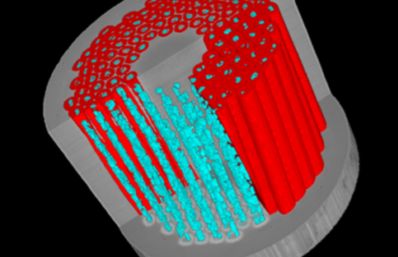In the spotlight of ESRF – a new tool to enhance wire performance

Nb3Sn is the superconducting material selected to take the place of Nb-Ti as the next step in accelerator magnet technology. In particular, the development of Nb3Sn-based magnets capable of providing 16 T dipolar fields is an indispensable technological breakthrough needed for the 100 TeV energy-frontier targeted by the Future Circular Collider (FCC) at CERN. The design of these magnets relies on the availability of advanced Nb3Sn wires capable to withstand extreme mechanical and thermal loads.
The Group of Applied Superconductivity led by Carmine Senatore at DQMP is active in several international collaborations to explore innovative paths for the development of these wires. A paper from Tommaso Bagni et al. on the topic, recently appeared in Scientific Reports, was selected for the Spotlight on Science of the European Synchrotron Radiation Facility (ESRF). The article reports on the development of a new tool to investigate the internal features of Nb3Sn superconducting wires, combining X-ray tomographic data at beamline ID19 of ESRF with an unsupervised machine-learning algorithm, with a view to providing new insights to enhance the wire performance.The new tool is ideal for characterizing the distribution and morphology of the components of superconducting wires, with a particular focus on the voids that are generated during the heat treatment necessary to form the Nb3Sn superconducting phase. Two different types of voids were detected: one inside the Nb3Sn filaments, the other in the copper matrix of the wire. The first type causes local stress concentration which may lead to the wire failure, when it is submitted to the large electromagnetic stresses due to the operation in the high field/high current conditions. The second type can be related to Sn leaking from filaments to the copper matrix which leads to poor electro-thermal stability of the whole wire.
The analyses proposed in the paper demonstrate the importance of an accurate description of the wire’s internal characteristics and the effectiveness of an advanced processing of the tomography data for a deeper correlation of the microstructure of Nb3Sn wires to electro-mechanical and thermo-physical properties. Hence, they provide new ingredients for the design of wires that meet the needs of future accelerator magnets.
Read the article in Scientific Reports